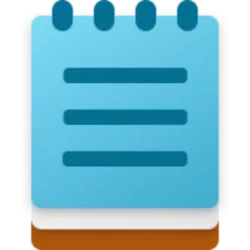This tutorial will show you how to enable or disable showing notification badging for Microsoft accounts on the Start menu and Settings for your account in Windows 10 and Windows 11.
Starting with Windows 11 build 25290, Microsoft started a new exploration of badging on the Start menu with two new treatments that some Insiders in the Dev Channel will see. Microsoft is trying out different text variants within these treatments.
Starting with Windows 11 build 23435 (Dev), Microsoft is continuing the exploration of badging on the Start menu with several new treatments for users logging in with local user accounts to highlight the benefits of signing in with a Microsoft account (MSA).
Starting with Windows 11 build 23451 (Dev), Microsoft is beginning to expand the roll out of notification badging for Microsoft accounts on the Start menu. A Microsoft account is what connects Windows to your Microsoft apps, backs up all of your data, helps you manage subscriptions, and where you can add extra security steps so you’re never locked out of your account. With this feature, Microsoft is giving you quick access to important account-related notifications.
Starting with Windows 11 build 22621.1928, Microsoft expands the roll out of notification badging for Microsoft accounts on the Start menu.
Starting with Windows 10 build 19045.4353 (RP) and Windows 11 build 22635.2776 (Beta), build 26002 (Canary), build 23595 (Dev), and build 22631.2792 Microsoft is rolling out account-related notifications for Microsoft accounts on the Settings homepage. A Microsoft account connects Windows to your Microsoft apps. The account backs up all your data and helps you manage your subscriptions. You can also add extra security steps to keep you from being locked out of your account. This feature displays notifications across the Start menu and Settings. You can manage Settings notifications in Settings > Privacy & security > General.
Starting with Windows 11 build 22631.3672, Microsoft starts the roll out of the new account manager on Start menu. When you sign in with a Microsoft account, the new design gives you a quick glanceable view of your account benefits and makes it easy to manage account settings.
Even when Show account-related notifications is turned off, required notifications are still shown.
Contents
- Option One: Turn On or Off "Show account-related notifications" on Start Menu in Settings
- Option Two: Turn On or Off "Show account-related notifications" on Start Menu using REG file
- Option Three: Turn On or Off "Show account-related notifications" on Start Menu in Registry Editor
EXAMPLE: Notification badging for Microsoft accounts on the Start menu
You may see account-related notifications when you open the account picture menu on Start.
1 Open Settings (Win+I).
2 Click/tap on Personalization on the left side, and click/tap on Start on the right side. (see screenshot below)
3 Turn On (default) or Off Show account-related notifications for what you want. (see screenshots below)
4 You can now close Settings if you like.
This option will not work when Administrator protection is turned on.
1 Do step 2 (on) or step 3 (off) below for what you want.
2 Turn On "Show account-related notifications" on Start Menu
This is the default setting.
A) Click/tap on the Download button below to download the file below, and go to step 4 below.
Turn_ON_show_account-related_notifications_on_Start.reg
Download
(Contents of REG file for reference)
Code:
Windows Registry Editor Version 5.00
[HKEY_CURRENT_USER\Software\Microsoft\Windows\CurrentVersion\Explorer\Advanced]
"Start_AccountNotifications"=dword:000000013 Turn Off "Show account-related notifications" on Start Menu
A) Click/tap on the Download button below to download the file below, and go to step 4 below.
Turn_OFF_show_account-related_notifications_on_Start.reg
Download
(Contents of REG file for reference)
Code:
Windows Registry Editor Version 5.00
[HKEY_CURRENT_USER\Software\Microsoft\Windows\CurrentVersion\Explorer\Advanced]
"Start_AccountNotifications"=dword:000000004 Save the .reg file to your desktop.
5 Double click/tap on the downloaded .reg file to merge it.
6 When prompted, click/tap on Run, Yes (UAC), Yes, and OK to approve the merge.
7 You can now delete the downloaded .reg file if you like.
1 Open Registry Editor (regedit.exe).
2 Navigate to the key location below in the left pane of Registry Editor. (see screenshot below step 3)
HKEY_USERS\<SID>\Software\Microsoft\Windows\CurrentVersion\Explorer\Advanced
Substitute <SID> in the key path above with the actual SID for the account you want to apply this to.
For example:
HKEY_USERS\S-1-5-21-2498639629-3946114050-4100787084-1001\Software\Microsoft\Windows\CurrentVersion\Explorer\Advanced
3 In the right pane of the Advanced key, double click/tap on the Start_AccountNotifications DWORD to modify it. (see screenshot below)
4 Enter 0 (off) or 1 (on - default) for what you want, and click/tap on OK. (see screenshot below)
5 You can now close Registry Editor if you like.
That's it,
Shawn Brink
Related Tutorials
- Add or Remove Account Picture Menu on Start Menu in Windows 11
- Add or Remove "Change account settings" in Account Picture Menu on Start Menu
- Add or Remove Sign out in Account Picture Menu on Start Menu in Windows 11
- Enable or Disable Show Notifications in Settings app in Windows 11
- Enable or Disable Suggested Content in Settings in Windows 11
- Add or Remove Settings Home page in Windows 11
Attachments
Last edited:











